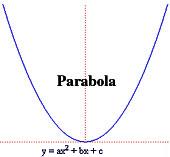Practice-Divisibility Rules (10 Qs)
__________________________________________________________________________________
q1. A number when divided by 13 gives a natural number, but when divided by 23 gives a real number. The smallest such number is
(1) 0 (2) 1 (3) 437 (4) 13 (5) 23
Sol:-Option 4. Very easy one. To get a natural number it has to be least 11. Real number can be a fraction hence answer option D.
__________________________________________________________________________________
q2. The number 276A621B is divisible by 9. How many possible values can A+B take ?
(1) 0 (2) 1 (3) 2 (4) 3 (5) Infinite
Sol:- Option 3. To be divisible by 9, sum of digits must be divisible by 9.
sum of digit = 2+7+6+A+6+2+1+B = 24+B
hence A+B can be 3 or 12. Can't be more as A & B can max be 9.
__________________________________________________________________________________
q3. A number 2524232221..........109876543210 is divided by 8. What is remainder ?
(1) 0 (2) 2 (3) 4 (4) 6 (5) 1
Sol:- Option 2. To check divisibility by 8, we are only concerned about last 3 digits. Remainder of 210 divided by 8 is 2.
__________________________________________________________________________________
q4. A number is divisible by 12 and 10.Which of the following is/are false ?
I. Number is also divisible by 15.
II. Number is also divisible by 30
III. Smallest such number is 120.
IV. Number is always co-prime with 7.
(1) Statement I & II
(2) Statement III
(3) Statement IV
(4) Statement III & IV
(5) None of the statement.
Sol:-Option 4.
Number is divisible by 12 & 10 hence divisible by 2,3,4,5,6 and their product.
Statement I - True as it is divisible by 3*5.
Statement II - True as it is divisible by 2*3*5. (Also If Statement 1 is true, this one has to be true)
Statement III - False, smallest such number is 60.
Statement IV - False, 7 is not factor of 12 or 10 but still a number can be formed eg. 840
__________________________________________________________________________________
q5. 14MN27 is divisible by 9. What can be maximum value of M if (M+N) is at its minimum value ?
(1) 0 (2) 2 (3) 4 (4) 8 (5) 9
Sol:- Option 3. Number is divisible by 9 hence M+N can be 4 or 13. As M+N is at its minimum, M can maximum be 4 when N is zero. __________________________________________________________________________________
q6. How many four digit numbers can be formed using the digits 2,3,5,7 exactly once, such that number is divisible by 25 ?
(1) 0 (2) 1 (3) 2 (4) 3 (5) 4
Sol :- Option 5. Number should have last two digits as 00, 25, 50 or 75 to be divisible by 25. Such possible numbers are 3725, 7325, 2375 & 3275.
__________________________________________________________________________________
q7. If a positive integer n is divided by 7, the remainder is 4. Which of the numbers below yields a remainder of 0 when it is divided by 7?
(1) n + 3 (2) n + 2 (3) n - 1 (4) n - 2 (5) n + 1
Sol:- n divided by 7 yields a remainder equal to 4 is written as follows
n = 7 k + 4 , where k is an integer.
add 3 to both sides of the above equation to obtain
n + 3 = 7 k + 7 = 7(k + 1)
The above suggests that n + 3 divided by 7 yields a remainder equal to zero. The answer is Option 1.
__________________________________________________________________________________
q8.If n is an integer, when (2n + 2)2 is divided by 4 the remainder is
(1) 0 (2) 1 (3) 2 (4) 3 (5) 4
Sol:-
We first expand (2n + 2)2
(2n + 2)2 = 4n 2 + 8 n + 4
Factor 4 out.
= 4(n 2 + 2n + 1)
(2n + 2)2 is divisible by 4 and the remainder is equal to 0. The answer is Option 1.
__________________________________________________________________________________
q9.Which of these numbers is not divisible by 3?
(1) 339 (2) 342 (3) 552 (4) 1111 (5) 672
Sol:- One may answer this question using a calculator and test for divisibility by 3. However we can also test for divisibility by adding the digits and if the result is divisible by3 then the number is divisible by 3.
3 + 3 + 9 = 15 , divisible by 3.
3 + 4 + 2 = 9 , divisible by 3.
5 + 5 + 2 = 12 , divisible by 3.
1 + 1 + 1 + 1 = 4 , not divisible by 3.
The number 1111 is not divisible by 3 the answer is Option 4.
__________________________________________________________________________________
q10. How many 4 digit numbers can be formed using 5, 8, 3, 4 exactly once, such that the number is divisible by 11 ?
(1) 16 (2) 5 (3) 1 (4) 22 (5) None of these
Sol:-
Dividing by 11
The difference between the sum of the odd numbered digits (1st, 3rd, 5th...) and the sum of the even numbered digits (2nd, 4th...) is divisible by 11.
No such number can be formed. Hence Option 5.











